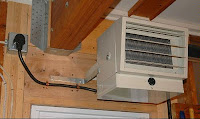Many cats are abandoned by their masters; left behind when they move or put out the house and forgotten. Some cats are rescued and adopted into other homes and other cats wait for their masters to return.
Bob is a cat that was left at the side of the road several years ago, he is waiting for his master to return .
In March of 2008 a car pulled up in front of my home and out the passenger side came a Norwegian Forest cat, the cat tried to get back into the car but the door was closed and the driver of the car backed up the hill and drove away. The cat sat on the sidewalk most of the day, looking up the hill, watching and waiting for his master to return.
Children approached the abandoned cat and he greeting them lovingly. He wrapped his tail around their legs and allowed them to pet him, the children walked away and the cat sat back down and waited patiently for his master to return.
I slowly approached the cat to see if I could take him inside. The cat was friendly and did allow me to sit next to him and pet him. I picked him up and he was okay with that too, but as soon as I walked toward my home he became agitated, he leaped from my arms.
The Norwegian Forest cat ran into the forest and was not seen for the rest of the day. I called my neighbors and the caregivers that I work with to ask them to watch for the abandoned cat. We all put out a bowl a food and water and we opened up the kitty door
The following morning the cat returned to the sidewalk and he waited and watched for his master to return. Many people think that cats have no feelings and that they will adjust. Cats love their masters and they never forget them.
This Norwegian Forest cat cat got lucky, as he was abandoned on my block. My neighbors and I watch out and care for the feral and stray cats. We trap
We named the abandoned cat Bob. He is easy going and does not fight but he does love the queen cats. He will meticulously groom them and I swear if he was human he would be a hair stylist. He is also a bit of a lover boy, as he is always kissing the queen cats. Bob joined the colony and visits me three times a day.
Bob's daily routine:
- Arrive at 5:30 am to the sidewalk where he was pushed out of the car and waits for his masters car to return.
- Go to my neighbors house at 9 am for a bite to eat.
- Visit with his cat friends at the colony.
- Head over to my feeding station at 1:00pm
- From 1:00 to 5:00 he is unaccounted for
- 5:00 pm shows up at my other neighbors deck
- 6:00 pm arrives at my feeding station
- 9:00 pm after neighbors go to bed Bob stretches out on their heated porch
Bob got lucky he did not need to forage, or seek shelter. He did not have to worry about feline leukemia, worms, or parasites. Because he gets his routine shots and is treated monthly with Merial Frontline Plus Flea and Tick Control for Cats. I am the one who usually brings Bob in for his annual wellness exam and vaccines and my neighbors who love Bob, chip in to pay for veternarin bill.
.
The abandoned cat that we call Bob gets plenty of human attention as everyone who meets Bob immediately loves him. Bob is making due, filling his time but he is still waiting for his master to return.
Update 1/28/2012
Bob is approximately ten years of age and he has chosen to spend his time with my neighbor that helps me care for the feral cats.
Bob can be viewed sitting on my friends porch, or following her around her yard. He will also spend time with me and I can count on him being in my yard or sitting on my front porch six hours out of the day.
This winter he has camped out in my shed/shelter and has allowed me to bring his food and water indoors to him. He will stay in the bed rather then hide from me in a dark corner. He also enjoys a thicket den I created for him out a wheelbarrow, wood logs and four feet of straw.
Here is a card I made at my zazzle shop that shows the winter den that I made for Bob.
Bob's life is simple, as he has a routine, we all feed the feral and stray cats the same food so there is no stomach upset and he has a warm bed to comfort him throughout the winter months.
He has cat friends that come to my yard to visit with him and they all lay in the ornamental grass garden by the back pond and groom each other.
But you should know that Bob waited for his master to return for 3 years, he sat on the sidewalk every day and stared up the hill. He watched the cars pass him by, no car ever stopped.
Bob's master never returned.


















